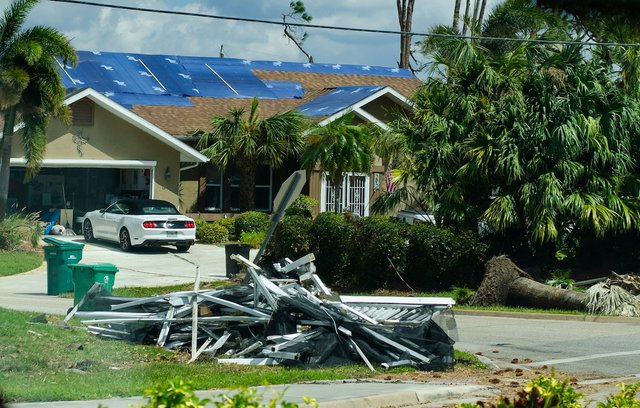
Ian goes down in history as the costliest hurricane to ever hit Florida, and the third costliest in the United States. Causing $112 billion in damages, many homes, residences and buildings sustained extensive damage or were destroyed as a result of floods, high winds and sustained severe storm conditions.
FEMA sought to assess the reasons behind the extensive destruction in its Mitigation Assessment Team Report (MAT), issued Dec. 2023. Entitled “Hurricane Ian in Florida, Building Performance Observations, Recommendations and Technical Guidance,” FEMA along with 34 subject matter experts including architects, engineers, construction, building code and design and technical specialists, found that the single most common building envelope damage was roof covering failure among single family dwellings (section ES-3).
During Ian, many older asphalt roofs failed due to high wind, leading the MAT to conclude that “asphalt shingle roof coverings for many residential buildings appeared to have inadequate resistance to wind loads.” Furthermore, data analysis from the sites MAT analyzed found that “90% of the asphalt shingle roofs older than 7 years sustained visible damage” compared to 21% of metal panel roofs (table 4-3). The MAT observed widespread damage to asphalt shingle roofs on both newer and older construction for all sites visited (section 4-12).
The MAT findings led to its recommendations that the Florida Building Commission and other industry groups consider funding more research to determine why asphalt shingle damage, particularly on aged asphalt shingle roofs, is often observed to be widespread. Notably, a similar recommendation was made in both the Hurricane Irma and Hurricane Michael MAT reports (section 6-18).
While the MAT found metal roofs performed far better, the report noted that in nearly all cases, better quality underlayment was also important, along with proper installation of hip and ridge roof coverings to ensure wind resistance. Special attention to design, installation and testing of soffits to resist water intrusion was also highlighted to help improve performance for all types of roofs.
"It's no surprise that metal roofs performed substantially better under such severe conditions, but the latest MAT report also reinforces that quality matters,"" said Renee Ramey, MRA executive director. "It's why, as an organization, we advocate and stand for quality-from materials to installation-to help homeowners achieve the strongest protection and performance for their homes."